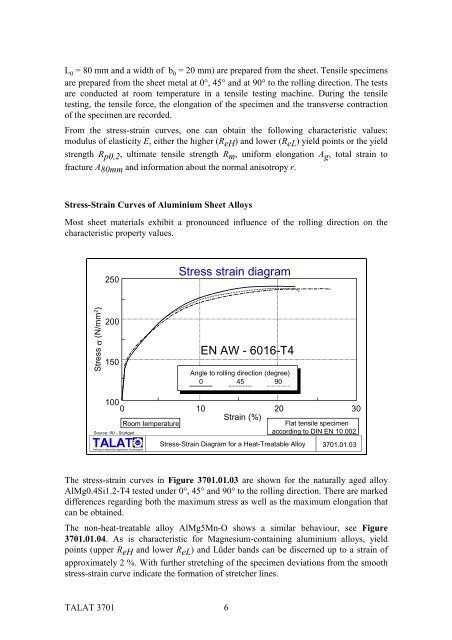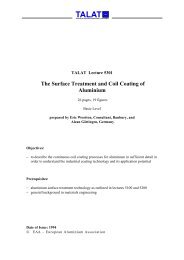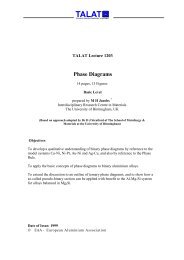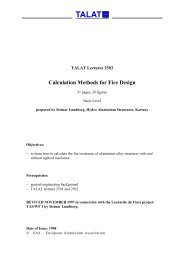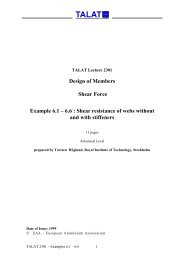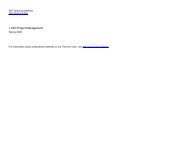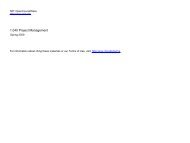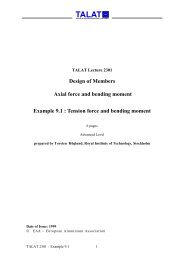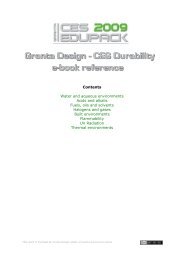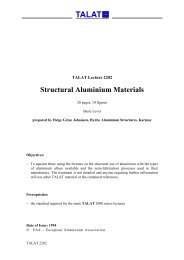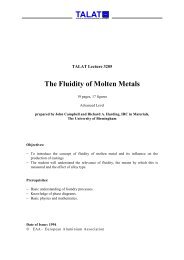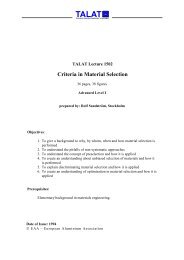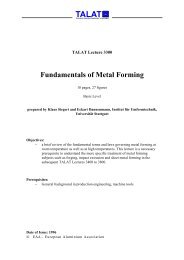Formability Characteristics of Aluminium Sheet - CORE-Materials
Formability Characteristics of Aluminium Sheet - CORE-Materials
Formability Characteristics of Aluminium Sheet - CORE-Materials
Create successful ePaper yourself
Turn your PDF publications into a flip-book with our unique Google optimized e-Paper software.
L0 = 80 mm and a width <strong>of</strong> b0 = 20 mm) are prepared from the sheet. Tensile specimens<br />
are prepared from the sheet metal at 0°, 45° and at 90° to the rolling direction. The tests<br />
are conducted at room temperature in a tensile testing machine. During the tensile<br />
testing, the tensile force, the elongation <strong>of</strong> the specimen and the transverse contraction<br />
<strong>of</strong> the specimen are recorded.<br />
From the stress-strain curves, one can obtain the following characteristic values:<br />
modulus <strong>of</strong> elasticity E, either the higher (ReH) and lower (ReL) yield points or the yield<br />
strength Rp0,2, ultimate tensile strength Rm, uniform elongation Ag, total strain to<br />
fracture A80mm and information about the normal anisotropy r.<br />
Stress-Strain Curves <strong>of</strong> <strong>Aluminium</strong> <strong>Sheet</strong> Alloys<br />
Most sheet materials exhibit a pronounced influence <strong>of</strong> the rolling direction on the<br />
characteristic property values.<br />
Stress σ (N/mm 2 )<br />
250<br />
200<br />
150<br />
Room temperature<br />
TALAT 3701 6<br />
Stress strain diagram<br />
EN AW - 6016-T4<br />
Angle to rolling direction (degree)<br />
0 45 90<br />
100<br />
0 10 20 30<br />
Strain (%)<br />
Source: IfU - Stuttgart<br />
alu<br />
Training in <strong>Aluminium</strong> Application Technologies<br />
Flat tensile specimen<br />
according to DIN EN 10 002<br />
Stress-Strain Diagram for a Heat-Treatable Alloy 3701.01.03<br />
The stress-strain curves in Figure 3701.01.03 are shown for the naturally aged alloy<br />
AlMg0.4Si1.2-T4 tested under 0°, 45° and 90° to the rolling direction. There are marked<br />
differences regarding both the maximum stress as well as the maximum elongation that<br />
can be obtained.<br />
The non-heat-treatable alloy AlMg5Mn-O shows a similar behaviour, see Figure<br />
3701.01.04. As is characteristic for Magnesium-containing aluminium alloys, yield<br />
points (upper R eH and lower R eL ) and Lüder bands can be discerned up to a strain <strong>of</strong><br />
approximately 2 %. With further stretching <strong>of</strong> the specimen deviations from the smooth<br />
stress-strain curve indicate the formation <strong>of</strong> stretcher lines.


